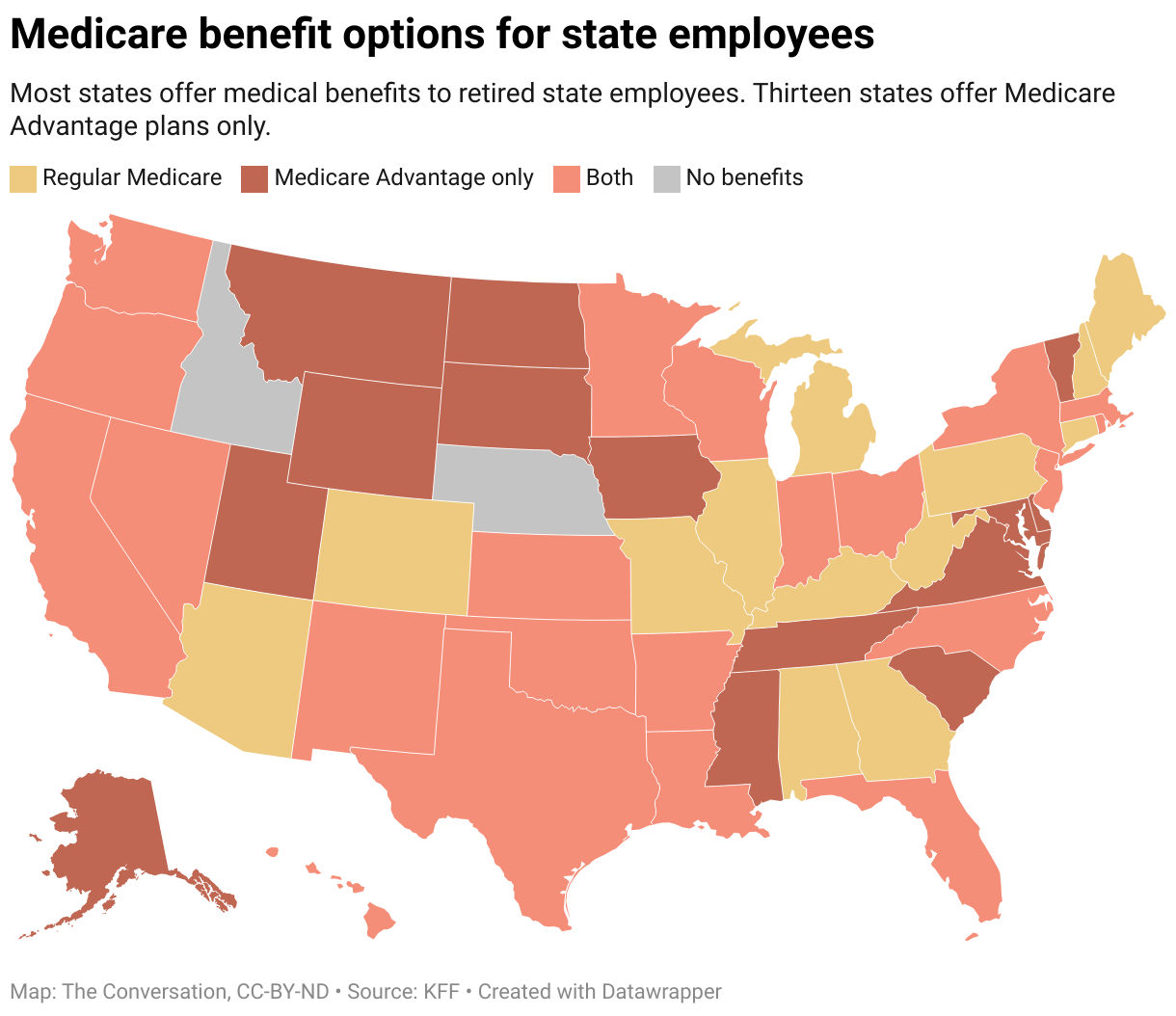Key Findings
- The average real cost of ACA health insurance was $2,343 in 2020, $811 higher than the average real employer health insurance cost of $1,532.
- The average real cost of ACA premiums was higher in 2020 than the average real employer premium in 40 states.
- The average ACA customer paid 32% of a single premium in 2020, 11% percentage points more than the average 21% paid by employees.
Discussion around the Affordable Care Act health insurance often centers on the full price of premiums.
But after federal tax credits, the end cost to many individuals can be quite different.
HealthCareInsider examined the real average cost of health insurance to consumers after the Advance Premium Tax Credit.
We then compared the real cost of ACA plans to the real cost to individuals of the prevalent employer plans.
Comparing premium cost data
For ACA plans, the real cost of health insurance means the cost paid by the consumer after getting an Advanced Premium Tax Credit (APTC).
For the employer health insurance plans that cover many Americans, the real cost of health insurance means the employee contribution to the full premium.
HealthCareInsider analysis found that the average full single ACA premium was $7,362 in 2020.
That’s $213 more than the average $7,149 for single-employer premiums.
When employer contributions and the Advanced Premium Tax Credit are accounted for, the difference grows even larger.
The average cost of ACA premiums paid by customers after the Advance Premium Tax Credit was $2,343 in 2020.
That’s $811 higher than the average employee contribution of $1,532.
Nationwide, HealthCareInsider found ACA premiums to be pricier than employer health insurance in a majority of states.
In 27 states, full ACA premiums in 2020 were more expensive than full employer premiums.
Factoring in the ACA tax credit and employee contribution, the number of states where ACA plans were pricier rises to 40.
Even after a tax credit, ACA customers paid more in many states
In addition to cost, different marketing methods may cause ACA customers to feel they’re paying more than their friends on employer plans.
ACA customers are made aware of the full price of their plans, which are listed on federal and state marketplaces.
In contrast, employees may never see the full price of their employer plans and very few employees pay the full cost of their insurance.
Measured by how much they contribute to the full price of their plans, ACA customers paid an average 32% in 2020.
In comparison, employees paid an average of only 21% of their premiums.
ACA customers paid a greater percentage of their premiums
The American Rescue Plan Evened the Cost of ACA and Employer Premiums
Through 2020, Americans who bought an ACA plan paid $800 more for coverage annually than someone on an employer plan.
But the increase of tax subsidies under the American Rescue Plan Act (ARPA) canceled out the cost advantage of employer plans.
For two years beginning January 1, 2021, ACA customers with incomes over 400% of the federal poverty level can receive subsidies.
Kaiser Family Foundation estimates the average savings under the ARPA subsidies at $70 per month for individual market purchasers.1
That’s $840 annually. Add it to existing tax credits, and employer plans’ cost advantage is erased.
A return to the lower ACA tax credits of 2020 would again pose a significant financial hardship for many people who get health insurance on the exchanges.
Congress will face another major decision in 2023 on whether to end or extend the expanded tax credits.
ACA premiums vs employer premiums
| State | Average employee contribution | Average employer premium | Average ACA premium after APTC | Average ACA premium | Employee contribution minus ACA premium after APTC | Employer premium minus ACA premium |
|---|---|---|---|---|---|---|
| Alabama | $1,676 | $6,393 | $1,560 | $8,292 | $116 | -$1,899 |
| Alaska | $1,334 | $8,635 | $2,244 | $8,868 | -$910 | -$233 |
| Arizona | $1,554 | $6,612 | $2,640 | $7,068 | -$1,086 | -$456 |
| Arkansas | $1,470 | $6,414 | $2,364 | $6,264 | -$894 | $150 |
| California | $1,242 | $7,173 | $2,220 | $6,828 | -$978 | $345 |
| Colorado | $1,673 | $7,206 | $2,460 | $5,736 | -$787 | $1,470 |
| Connecticut | $1,740 | $7,501 | $2,928 | $8,208 | -$1,188 | -$707 |
| Delaware | $1,803 | $7,280 | $2,304 | $8,016 | -$501 | -$736 |
| District of Columbia | $1,580 | $7,558 | $6,060 | $6,408 | -$4,480 | $1,150 |
| Florida | $1,811 | $7,078 | $1,176 | $7,164 | $635 | -$86 |
| Georgia | $1,530 | $6,876 | $1,596 | $6,792 | -$66 | $84 |
| Hawaii | $852 | $7,040 | $2,676 | $7,584 | -$1,824 | -$544 |
| Idaho* | $1,151 | $6,744 | ||||
| Illinois | $1,659 | $7,376 | $2,688 | $7,632 | -$1,029 | -$256 |
| Indiana | $1,627 | $7,319 | $3,240 | $6,528 | -$1,613 | $791 |
| Iowa | $1,709 | $6,932 | $1,332 | $9,876 | $377 | -$2,944 |
| Kansas | $1,541 | $6,675 | $2,052 | $7,656 | -$511 | -$981 |
| Kentucky | $1,535 | $6,949 | $2,220 | $7,128 | -$685 | -$179 |
| Louisiana | $1,666 | $6,713 | $2,280 | $8,124 | -$614 | -$1,411 |
| Maine | $1,550 | $7,496 | $2,112 | $7,704 | -$562 | -$208 |
| Maryland | $1,603 | $7,352 | $2,136 | $5,976 | -$533 | $1,376 |
| Massachusetts | $1,558 | $7,452 | $2,376 | $4,776 | -$818 | $2,676 |
| Michigan | $1,440 | $6,683 | $2,112 | $5,760 | -$672 | $923 |
| Minnesota | $1,499 | $6,910 | $3,420 | $5,328 | -$1,921 | $1,582 |
| Mississippi | $1,566 | $6,561 | $984 | $7,296 | $582 | -$735 |
| Missouri | $1,611 | $7,179 | $1,896 | $7,608 | -$285 | -$429 |
| Montana | $1,168 | $6,860 | $2,076 | $6,864 | -$908 | -$4 |
| Nebraska | $1,738 | $7,611 | $1,284 | $9,180 | $454 | -$1,569 |
| Nevada* | $1,658 | $6,493 | ||||
| New Hampshire | $1,681 | $7,991 | $2,856 | $6,348 | -$1,175 | $1,643 |
| New Jersey | $1,855 | $7,373 | $2,892 | $6,648 | -$1,037 | $725 |
| New Mexico | $1,560 | $7,424 | $2,340 | $5,712 | -$780 | $1,712 |
| New York | $1,684 | $8,177 | $2,712 | $7,716 | -$1,028 | $461 |
| North Carolina | $1,653 | $7,036 | $1,392 | $7,920 | $261 | -$884 |
| North Dakota | $1,257 | $7,216 | $2,208 | $5,436 | -$951 | $1,780 |
| Ohio | $1,583 | $6,989 | $2,760 | $6,264 | -$1,177 | $725 |
| Oklahoma | $1,462 | $7,058 | $1,296 | $7,728 | $166 | -$670 |
| Oregon | $1,140 | $6,917 | $2,772 | $6,696 | -$1,632 | $221 |
| Pennsylvania | $1,368 | $7,246 | $2,556 | $7,776 | -$1,188 | -$530 |
| Rhode Island | $1,531 | $7,326 | $2,160 | $5,220 | -$629 | $2,106 |
| South Carolina | $1,895 | $7,516 | $1,488 | $7,356 | $407 | $160 |
| South Dakota | $1,508 | $7,070 | $1,632 | $8,244 | -$124 | -$1,174 |
| Tennessee | $1,550 | $6,485 | $1,740 | $7,692 | -$190 | -$1,207 |
| Texas | $1,497 | $7,017 | $1,380 | $6,384 | $117 | $633 |
| Utah | $1,461 | $6,593 | $2,316 | $5,100 | -$855 | $1,493 |
| Vermont | $1,810 | $7,868 | $5,376 | $12,408 | -$3,566 | -$4,540 |
| Virginia | $1,679 | $6,928 | $2,088 | $7,692 | -$409 | -$764 |
| Washington | $1,135 | $7,440 | $3,396 | $6,336 | -$2,261 | $1,104 |
| West Virginia | $1,546 | $6,993 | $3,420 | $11,904 | -$1,874 | -$4,911 |
| Wisconsin | $1,581 | $7,250 | $2,076 | $7,884 | -$495 | -$634 |
| Wyoming | $1,354 | $7,743 | $1,536 | $11,604 | -$182 | -$3,861 |
Methodology
Data on employer insurance is sourced from the Medical Expenditure Panel Survey Insurance Component. Two datasets are used:
- Average total single premium (in dollars) per enrolled employee at private-sector establishments that offer health insurance, United States, 2020.
- Average total employee contribution (in dollars) per enrolled employee for single coverage at private-sector establishments that offer health insurance, United States, 2020.
Data on ACA insurance is sourced from Kaiser Family Foundation, Marketplace Average Premiums and Average Advanced Premium Tax Credit (APTC). Two datasets are used:
- Average premium, 2020
- Average premium after APTC, 2020
ACA premiums are subtracted from employer premiums to determine the difference by state. National averages are unweighted.
*Non-reporting states




